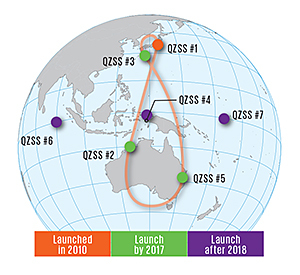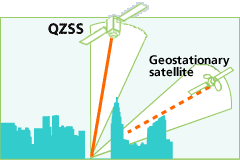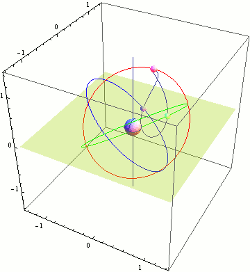Japan creates an alternative to GPS with centimeter resolution
 The Japanese company Mitsubishi Electric announced its intention to launch a satellite constellation into orbit, which after 2018 will provide high accuracy of the location. According to the authors of the idea, with an increase in the accuracy of coordinates, the possibilities of using satellite navigation in practical tasks are expanding. For example, robotic cars can accurately drive in their lane, knowing the coordinates of the road markings.
The Japanese company Mitsubishi Electric announced its intention to launch a satellite constellation into orbit, which after 2018 will provide high accuracy of the location. According to the authors of the idea, with an increase in the accuracy of coordinates, the possibilities of using satellite navigation in practical tasks are expanding. For example, robotic cars can accurately drive in their lane, knowing the coordinates of the road markings. The Quazi-Zenith Satellite System (QZSS) is designed to complement the US GPS in Japan. QZSS satellites will allow you to calculate the location of the receiver with an accuracy of 1-3 centimeters.
“GPS positioning can give errors of up to 10 meters due to various types of errors,” said Yuki Sato, an engineer at the Advanced Technology R&D Center at Mitsubishi Electric. “And in Japan, the GPS signal is often blocked by mountains and skyscrapers, so in many places it is simply unavailable.” Indeed, between skyscrapers in the center of Tokyo, it is almost impossible to catch it.
 Mitsubishi Electric is responsible for almost the entire “space” part of the project, including the manufacture of satellites. The Japan Aerospace Agency (JAXA) launched the first QZSS satellite in September 2010. Three more pieces will be launched before the end of 2017, and then the last three. This is enough in excess to cover the entire country and its environs. From the point of view of the observer on the earth, the satellites in the sky will form a figure similar to the asymmetric figure “eight”. At the same time, at least one satellite in geosynchronous orbit will always be in a quasi-zenithic position, that is, with an elevation angle of more than 70 °. This is critical for residents of megacities.
Mitsubishi Electric is responsible for almost the entire “space” part of the project, including the manufacture of satellites. The Japan Aerospace Agency (JAXA) launched the first QZSS satellite in September 2010. Three more pieces will be launched before the end of 2017, and then the last three. This is enough in excess to cover the entire country and its environs. From the point of view of the observer on the earth, the satellites in the sky will form a figure similar to the asymmetric figure “eight”. At the same time, at least one satellite in geosynchronous orbit will always be in a quasi-zenithic position, that is, with an elevation angle of more than 70 °. This is critical for residents of megacities.  The Japanese government has allocated $ 500 million for the first three satellites, as well as $ 1.2 billion for the construction of 1,200 reference stations on earth.
The Japanese government has allocated $ 500 million for the first three satellites, as well as $ 1.2 billion for the construction of 1,200 reference stations on earth.The management of ground stations is entrusted to a private company, Quazi-Zenith Satellite System Services, created specifically for this purpose.
Rubidium-based atomic clocks are installed on QZSS satellites. To eliminate inaccuracies during triangulation, the control station constantly monitors satellite readings and its actual location relative to reference stations. Then, information for correction is transmitted to the satellite. According to engineers, the system requires constant correction, so that a stream is transmitted to the satellite at a speed of 2 Kbps.
Tests of the first QZS-1 satellite showedthat after correction, it provides positioning accuracy with an error of not more than 1.3 cm in the horizontal direction and 2.9 cm in the vertical. Such an accurate navigation system can be used, for example, for the automatic movement of cars and agricultural machinery.
Mitsubishi Electric emphasizes the low cost of the QZSS compared to other satellite positioning systems. For example, Galileo’s budget has already exceeded $ 6.9 billion.
